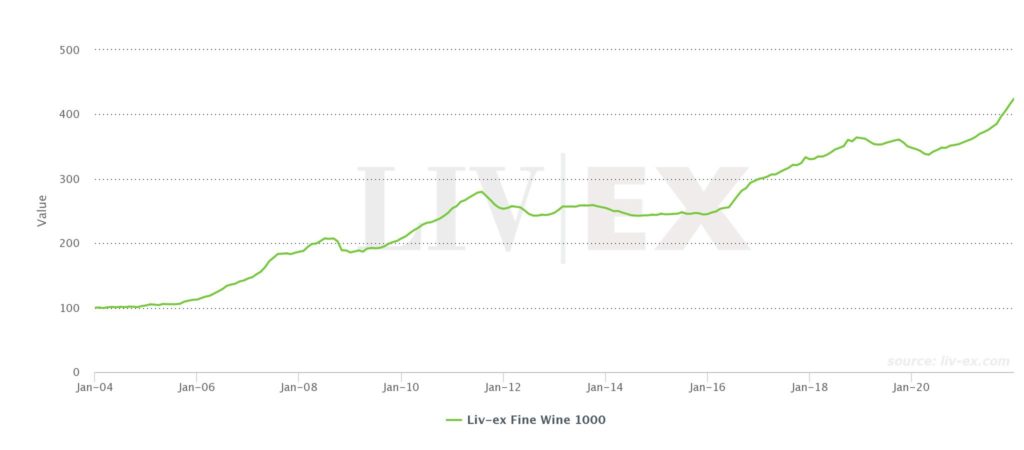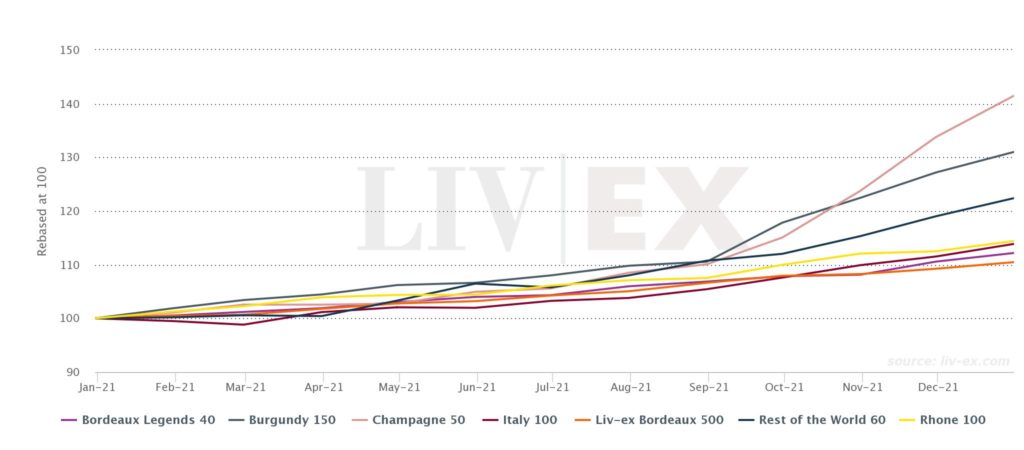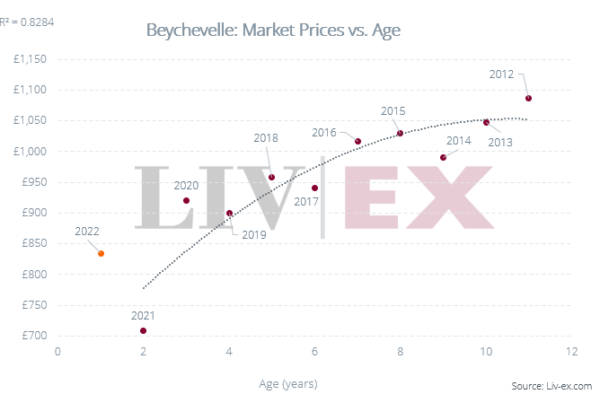- The Liv-ex Fine Wine 1000 rose 2.1% in December, having risen 18.1% in 2021.
- The Champagne 50 was the best-performing sub-index last month and rose 40% last year.
- Several vintages of Salon were among December’s biggest risers.

*made with the Liv-ex Charting Tool
The Liv-ex 1000 index, the broadest measure of the secondary market, rose 2.1% in December to a new record level of 424.40.
Over the course of 2021 it rose 18.1%, a little behind the Liv-ex Fine Wine 100 which rose 23.0% last year.
Champagne rises to record high
As outlined in our end of year report, the key trends of last year were the further broadening of the secondary market and surging prices – especially for Champagne and Burgundy.
The Champagne 50 sub-index finished the year (Jan-Dec 2021) up 40.0% and at a record high level. The next best-performing sub-index was the Burgundy 150 (28.6%).
After an 8.1% rise in November, the Champagne 50’s December rise was not as high but it still finished the year with a flourish, up 5.8%.
The sub-index’s performance was driven by rising prices for several vintages of Salon (2007, 2006 and 2002), Dom Pérignon’s 2005 Rosé, Taittinger’s 2006 Comtes de Champagne and Bollinger’s 2005 Grande Année.
California leads the Rest of the World category
The Rest of the World 60 was the third highest-riser in December (2.8%) and in fact the third best-performing sub-index in the Liv-ex 1000 overall in 2021.
It rose 22.1% last year, buoyed by demand for its Californian wines (Screaming Eagle, Opus One and Dominus) in particular.
The Italy 100 rose 2.1% in December to finish the year up 14.4% – just ahead of the Rhone 100 which rose 13.0%.
The weakest sub-index in 2021 was the Bordeaux 500 which still rose 10.0%, largely driven by steady demand for the First Growths.


*made with the Liv-ex Charting Tool
Changes to the Liv-ex 1000 index
The Liv-ex 1000 index will feature new wines from this month, as part of an annual revision that ensures that the index accurately reflects the market. Older and low liquidity wines are pushed out to make room for more active wines.
To qualify, wines must have critical acclaim, be physically available on the market (wines trading En Primeur are excluded) and attract regular demand. Find out what is changing and why here.
About Liv-ex indices
The Liv-ex Fine Wine 1000 tracks 1,000 wines from across the world, arranged into seven sub-indices: the Bordeaux 500, the Bordeaux Legends 40, the Burgundy 150, the Champagne 50, the Rhone 100, the Italy 100 and the Rest of the World 60.
The index is calculated using the Liv-ex Mid Price, which refers to the mid-point between the highest live bid and lowest live offer on the market. The prices are validated against additional data including transaction prices and are the most robust measure for pricing wines available in the market.
The reason for this is because other sources of fine wine price information and indices base their calculations on list prices. These are advertised prices, often collected from sellers who may be advertising wine that they don’t even have in stock. There is no firm commitment to buy or sell at an advertised price. The real value of the wine may be higher or lower than listed.
Liv-ex can uniquely provide prices from real transactions among the wine trade. These are historic trade prices, as well as firm commitments to buy or sell on the market at a given price. All transactions are standardised by condition and tax status, allowing you to make like-for-like comparisons. Our members value this because it is real, proven price information.
Not a member of Liv-ex? Request a demo to see the exchange and a member of our team will be in touch with you shortly.





